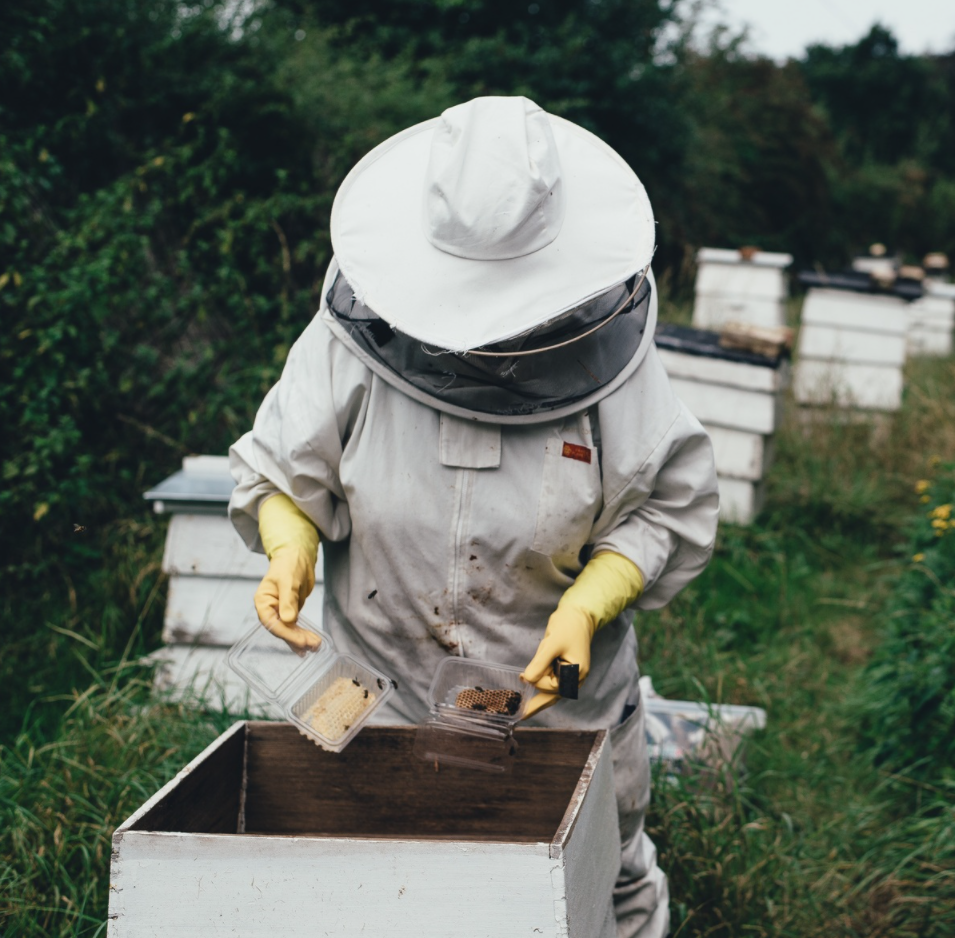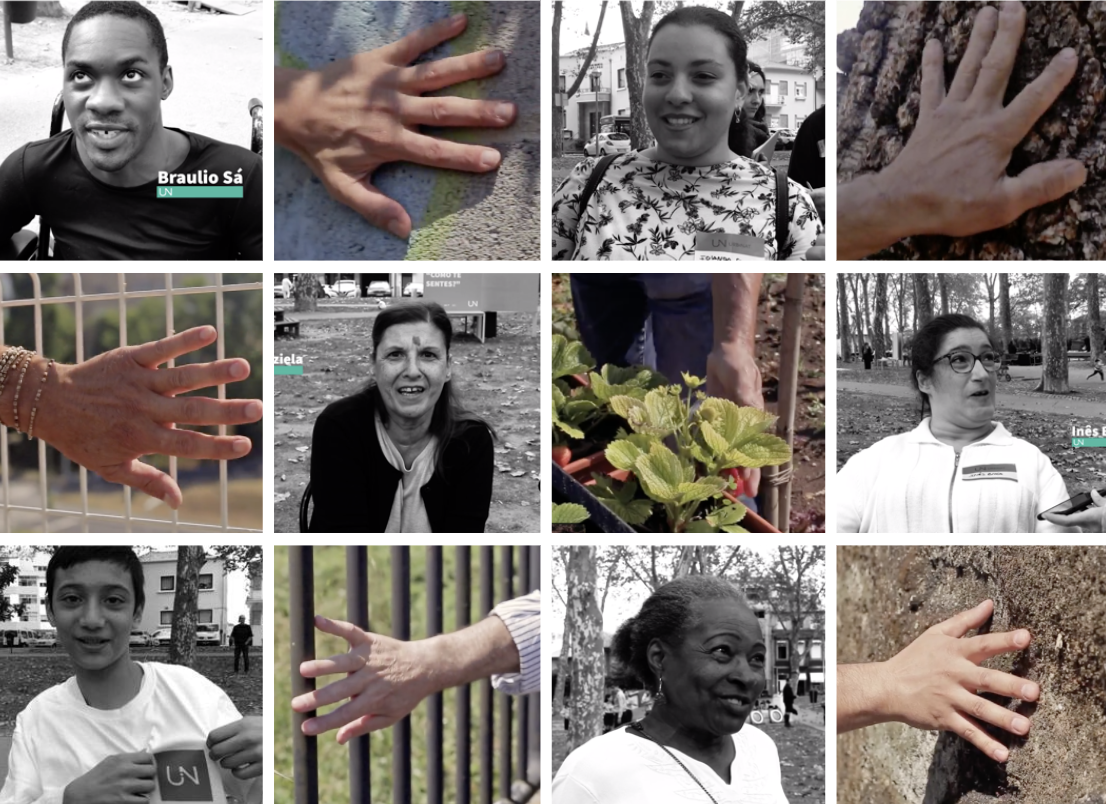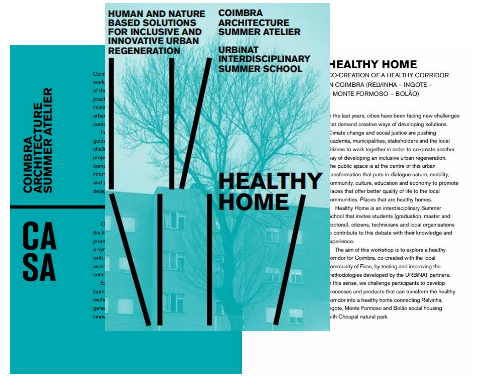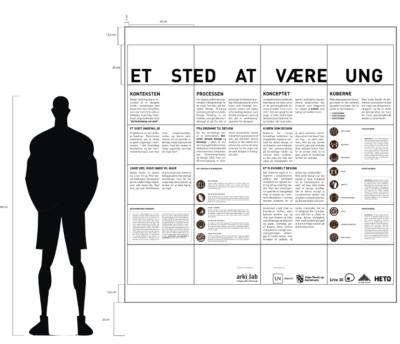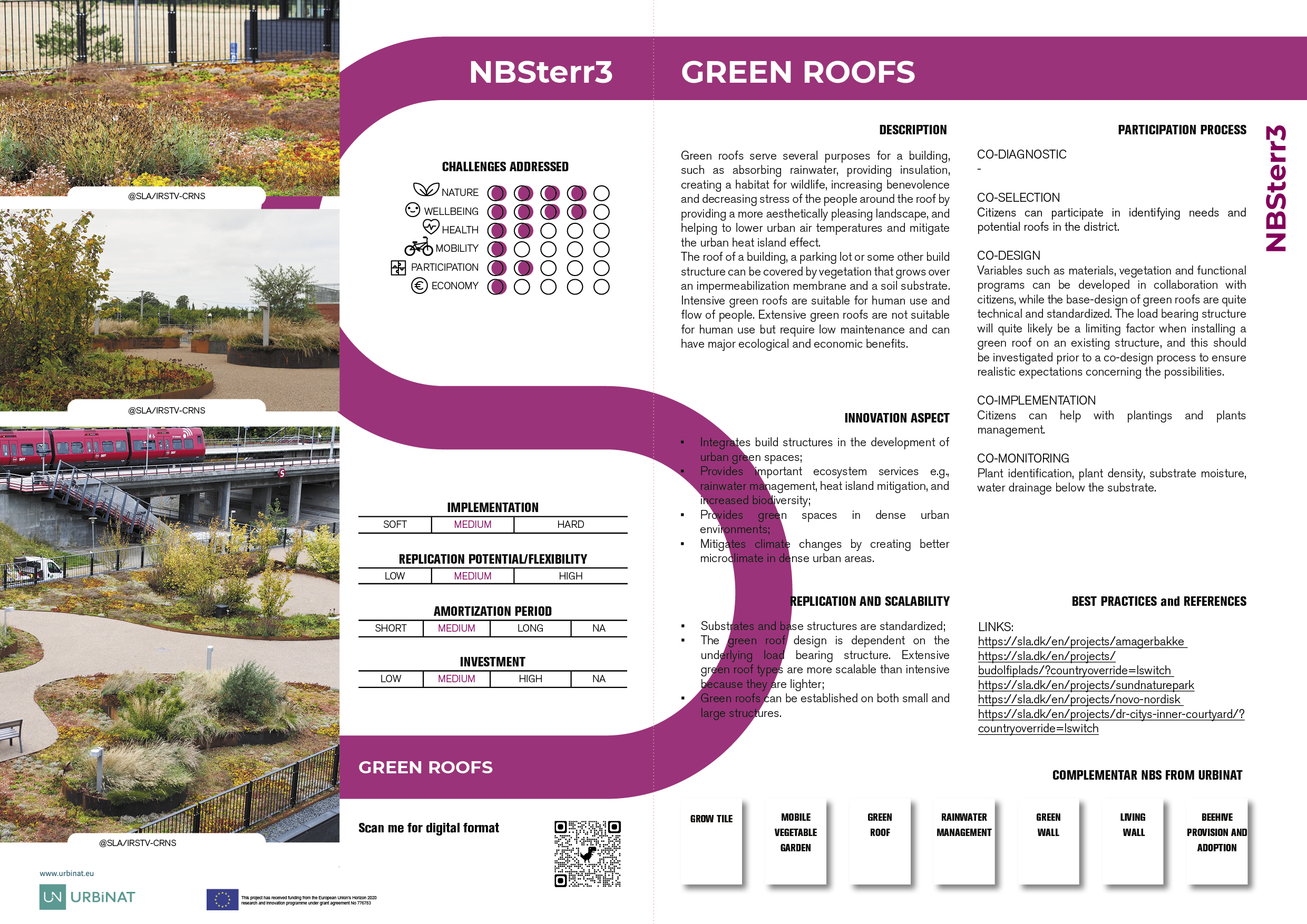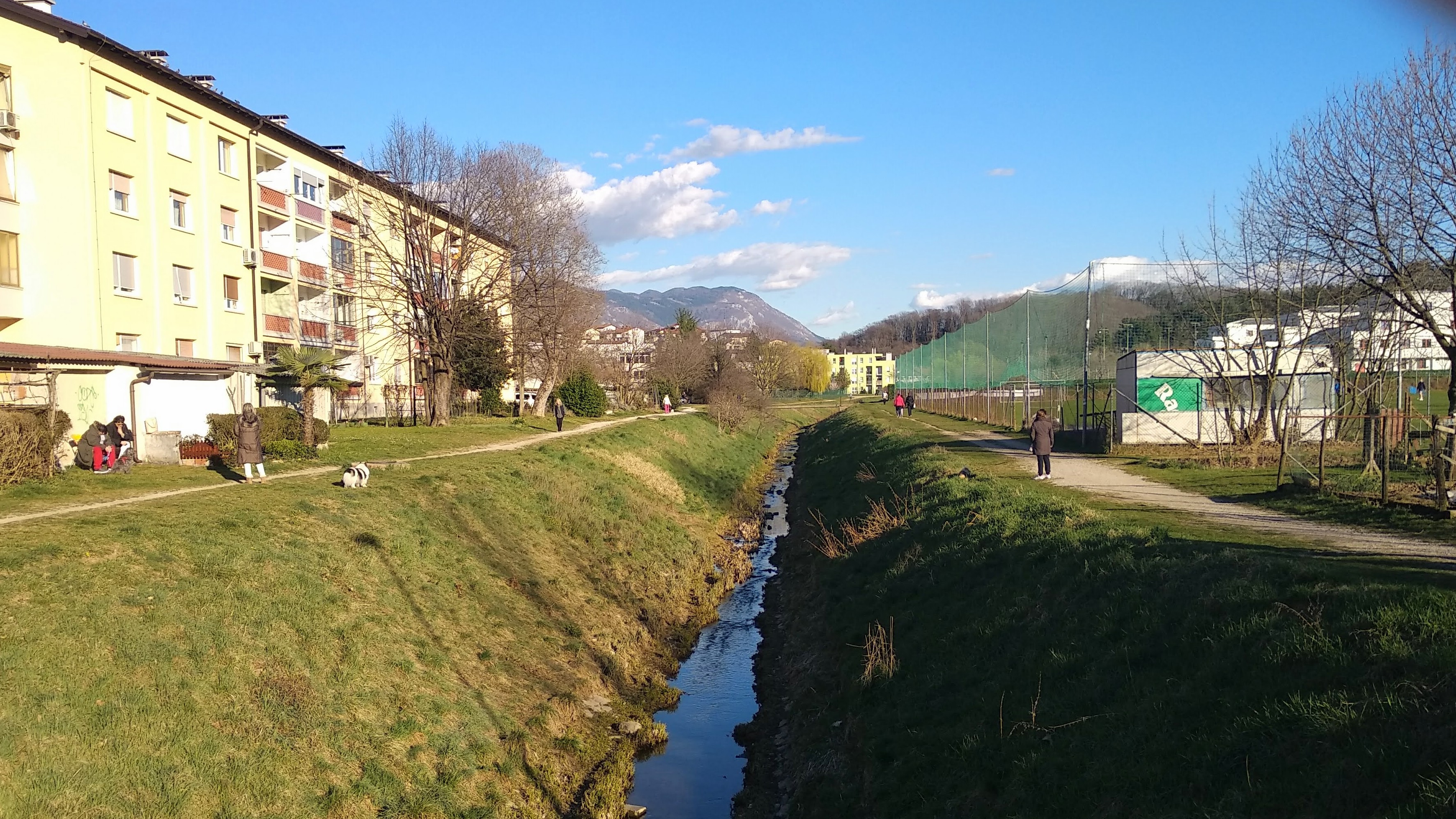Beehive Provision and Adoption
CHALLENGES ADDRESSED
Score impact
Nature
Wellbeing
Health
Mobility
Participation
Economy
DESCRIPTION
“Beehiving” offers a manmade replica of the natural environment, aimed to produce honey (the term is used interchangeably with “bee keeping”). The focus here is “beehiving” in urban areas, a relatively recent phenomenon. Such beehiving must be complemented by other functions, i.e., “side-activities” capable of supporting “harmony” with the surrounding urban dwellers and context. Getting that relationship right is a core task which incorporates revitalizing urban ecosystems, awareness creation, mindset change, distribution chains, and social innovation. Success in that regard supports the wellbeing of citizens while also increasing access to the healthy products produced by bees.
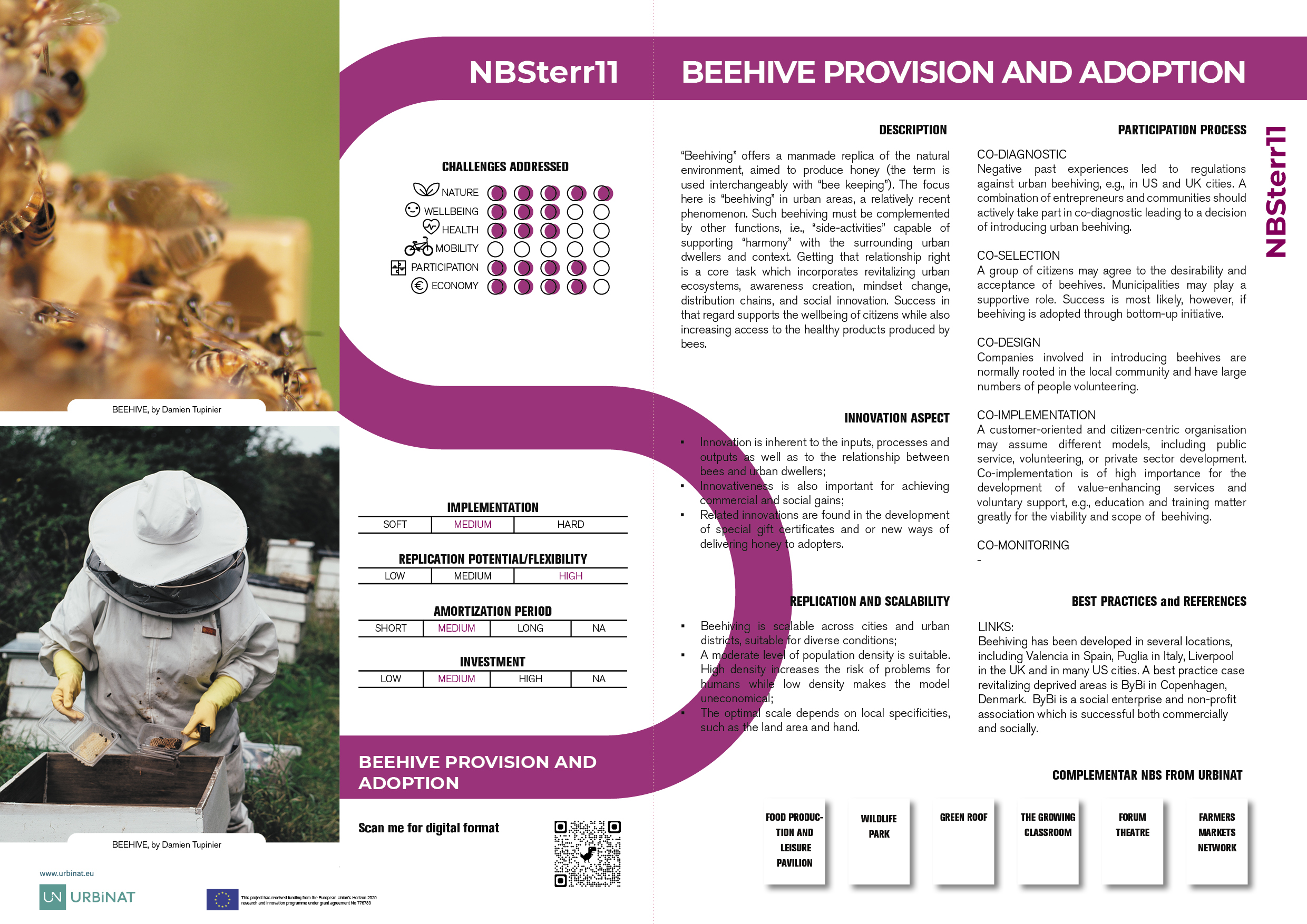
[Download PDF] Beehive Provision and Adoption
Beehiving” offers a manmade replica of the natural environment, aimed to produce honey (the term is used interchangeably with “bee keeping”). The focus here is “beehiving” in urban areas, a relatively recent phenomenon. Such beehiving must be complemented by other functions, i.e., “side-activities” capable of supporting “harmony” with the surrounding urban dwellers and context. Getting that relationship right is a core task which incorporates revitalizing urban ecosystems, awareness creation, mindset change, distribution chains, and social innovation. Success in that regard supports the wellbeing of citizens while also increasing access to the healthy products produced by bees.
INNOVATION ASPECT
- Innovation is inherent to the inputs, processes and outputs as well as to the relationship between bees and urban dwellers;
- Innovativeness is also important for achieving commercial and social gains;
- Related innovations are found in the development of special gift certificates and or new ways of delivering honey to adopters.
REPLICATION AND SCALABILITY
- Beehiving is scalable across cities and urban districts, suitable for diverse conditions;
- A moderate level of population density is suitable. High density increases the risk of problems for humans while low density makes the model uneconomical;
- The optimal scale depends on local specificities, such as the land area and hand.
PARTICIPATION PROCESS
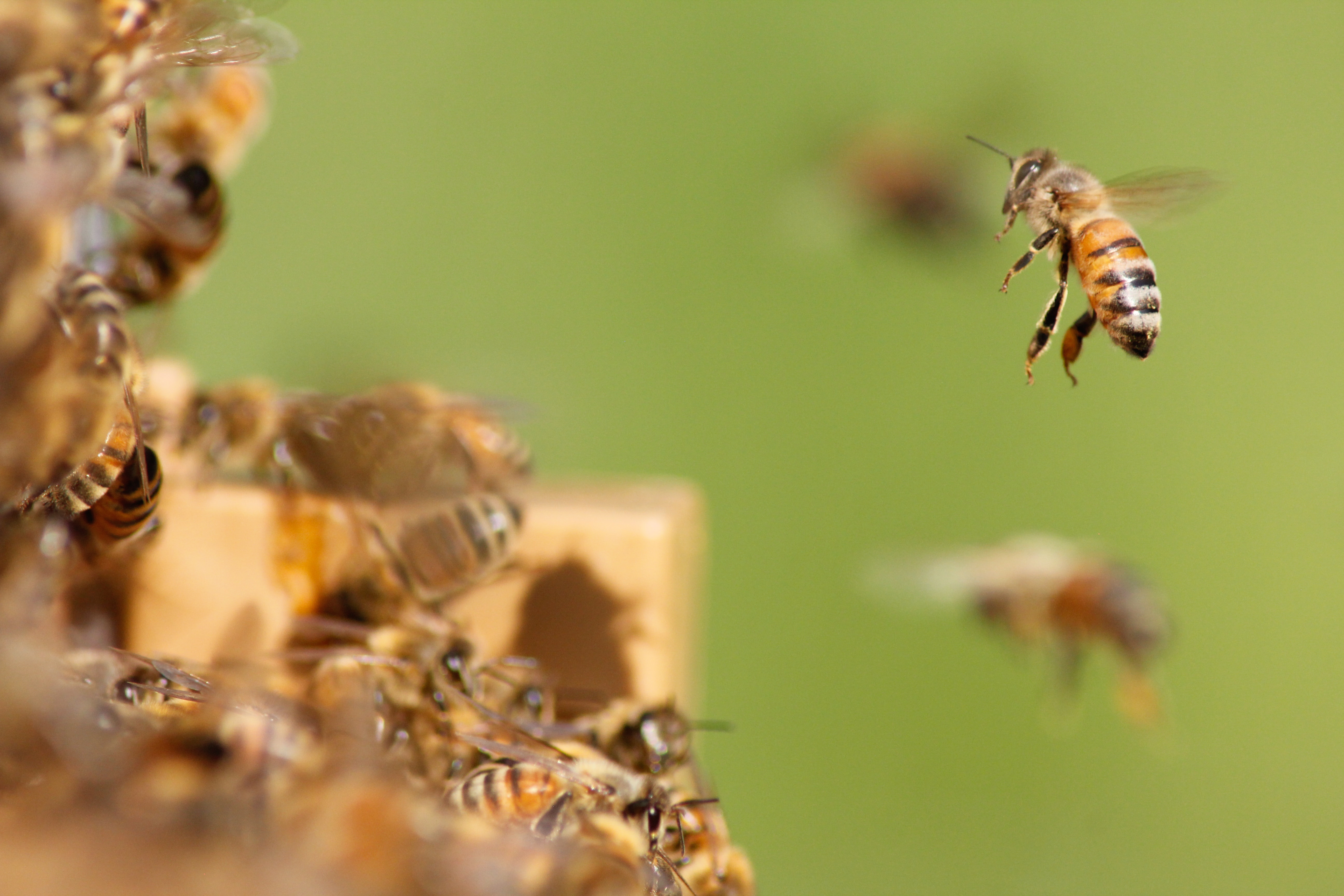
-
1
CO-DIAGNOSTIC
Negative past experiences led to regulations against urban beehiving, e.g., in US and UK cities. A combination of entrepreneurs and communities should actively take part in co-diagnostic leading to a decision of introducing urban beehiving.
-
2
CO-SELECTION
A group of citizens may agree to the desirability and acceptance of beehives. Municipalities may play a supportive role. Success is most likely, however, if beehiving is adopted through bottom-up initiative.
-
3
CO-DESIGN
Companies involved in introducing beehives are normally rooted in the local community and have large numbers of people volunteering.
-
4
CO-IMPLEMENTATION
A customer-oriented and citizen-centric organisation may assume different models, including public service, volunteering, or private sector development. Co-implementation is of high importance for the development of value-enhancing services and voluntary support, e.g., education and training matter greatly for the viability and scope of beehiving.
Best Practices & References
LINKS:
Beehiving has been developed in several locations, including Valencia in Spain, Puglia in Italy, Liverpool in the UK and in many US cities. A best practice case revitalizing deprived areas is ByBi in Copenhagen, Denmark. ByBi is a social enterprise and non-profit association which is successful both commercially and socially.


